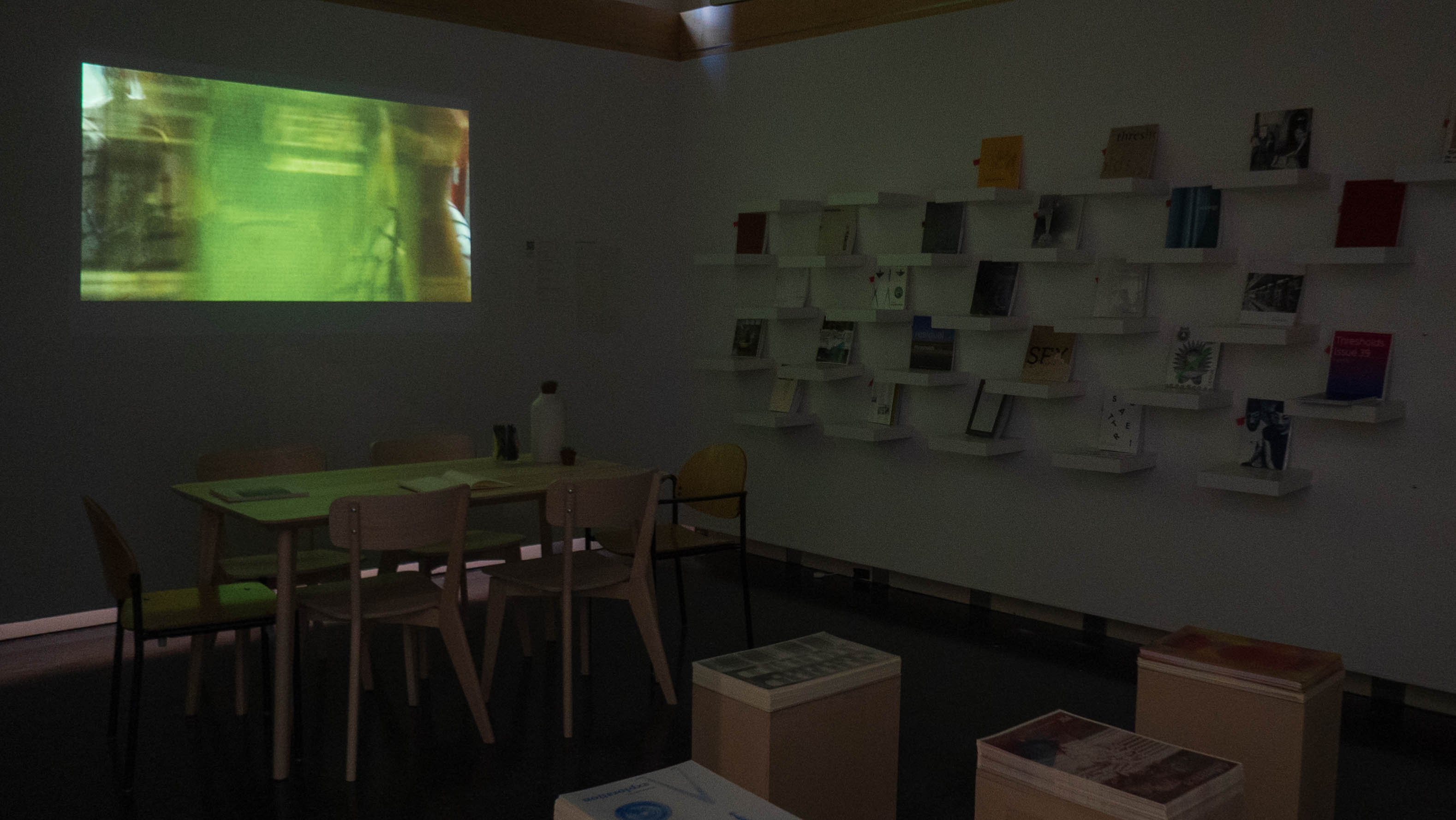Poems are the Unleashed Tides of Muteness (2022)
11min Essay+Video. (link)
Installation, digital projection, RISO prints, dimensions variable.
Published: Thresholds Vol. 50, MIT Press, 2022. (link)
Published in the Thresholds 50: Before/After, this video/essay Poems are the Unleashed Tides of Muteness revolves around intertwined notions of amnesia, tragedy, lunacy, poetry, and insomnia, with the title inspired by Brazilian novelist Clarice Lispector. Excerpts of the writing are narrated throughout the video which consists of five identical cycles of stop-motion photographs in relation to a safety control measure where underground stations were momentarily shut down during the day due to social movements.
A print version of the work was adapted for the journal where selected texts from the writing are outlined as a silhouette of the local metro map, with blocked-out stations as suspensions to linear progression.
During the launch event of the journal and exhibition on April 22, 2022, the video essay was transformed into a live performance with multi-channel sound, spoken words, and adapted Cantonpop band “Beyond”’s music, in collaboration with sound artist Cristobal Garcia Belmont.
A sample paragraph can be found at the bottom of this page.
︎︎︎Peformance documentation excerpt. Credit: Ashmi Mridul.


︎︎︎Peformance documentation credit: Daisy Zhang (above); Installation view, Keller Gallery, MIT (below).


︎︎︎Film still.



︎︎︎Print spread. Designed by Jordi Ng.


︎︎︎For a moving image installation, RISO prints of the photographs are adhered to a tunnel structure. Selected narratives from the video/essay are outlined as a silhouette of the Hong Kong Mass Transit Railway (MTR) map with blocked-out stations.
Writing excerpt:
"If one is discouraged as a maniac, make a vow to insanity, as the distinction between madness and art might just be a fine line that unconvincingly stretches along origins of language. Foucault continued, ‘by the madness which interrupts it, a work of art opens a void, a moment of silence, a question without answer, provokes a breach without reconciliation where the world is forced to question itself." No further clarifications on relations between madness and art should be expanded, for the impulse of epistemological organisation may render its visibility under the venatic eyes of autocratic regimes. Isn’t the often isolated sanctuary for madmen reminiscent of the detachment of artworks from the empirical world, as coined by Adorno Theodor, the ‘autonomy’ of art? In the end, it is the becoming of ideas, the formation of disease and the form of art that converge with critique; what they become afterwards (the art, and the disease itself) are just fragmentary debris.'